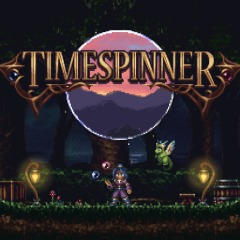
The year 1997 saw the North American releases of several PlayStation RPGs including the ballyhooed Final Fantasy VII, the less-popular but exalted first entry of the Wild Arms series, and the latest entry of Konami’s Castlevania franchise, Castlevania: Symphony of the Night, which would be influential, given its debut of the “Metroidvania” subgenre of action games, with a focus on exploring a big interconnected world. The subgenre would see several more releases within and without the Castlevania series, even in the current console generation, with 2018 seeing the release of the independently-developed Timespinner, which is a worthy spiritual successor.
True to its Castlevania RPG influences, Timespinner sports two-dimensional exploration of an interconnected world, in the game’s case across two different periods, with the female protagonist Lunais able to equip a pair of orbs with which to attack enemies, these receiving experience the more she uses them, as she herself does, with level-ups happening occasionally. The player can occasionally find permanent increases to her overall health and magic points, not to mention sand that allows her to completely freeze the current area and foes for a certain time, necessary to make platforms out of some enemies and advance exploration.
Lunais can further equip an item that allows for combat effects such as floating orbs that damage whatever they touch, and a powerful magic-consuming ability, more of which the player can unlock with specific materials. Certain abilities that she gains throughout the two periods enhance exploration, such as a double-jump and late in the game, the ability to dash. Bosses occasionally impede exploration, and tend to have patterns the player needs to note to triumph, especially on higher difficulties. The gameplay mostly serves the game well, in spite of slight early-game hell and the potential for foes to knock Lunais into different rooms, foes consequentially respawning in the last room at full health.
Aside from lengthy loading times at points (somewhat inexcusable in the digital-only version), control generally serves Timespinner well, with easy menus, an in-game clock, the ability to tell how equipment the player wishes to buy increases or decreases Lunais’ stats, sufficiently-spaced save points and teleportation between special chambers, and the like. Pretty much the only real complaint aside from the load times is that the player needs to first go into the game menus to view a full map of the interconnected world, but the game otherwise interfaces well with players.
Timespinner actually has a pretty good story for a Metroidvania, largely due to the sheer amount of lore the player occasionally finds through documents such as letters, with some same-sex themes in the mix, as well, and Lunais definitely isn’t a blank-slate protagonist. There is maybe one derivative plot twist, but the narrative very much helps the game more than hurts.
Jeff Ball definitely isn’t a household name when it comes to videogame music, although he definitely put plentiful effort into the soundtrack, which is actually one of the best this reviewer has heard in any Western RPG to date; the sound effects and voice clips from Lunais are good, as well. There are some common silent cutscenes, but Timespinner is very much easy on the ears.
The two-dimensional graphics also look pleasant, with colorful spritework and believable scenery, and many enemies that have similar appearances certainly aren’t blatant palette-swaps. The human sprites don’t show much emotion, but Timespinner is otherwise a beautiful game.
Finally, the main quest is fairly short, a little less than six hours, although features such as trophies and a New Game+ exist to enhance lasting appeal.
In the end, Timespinner is a worthy spiritual successor to the RPG Castlevania games, given its excellent side-scrolling gameplay, tight control, solid lore, one of the strongest Western roleplaying game soundtracks to date, pretty visuals, and plenty reasons to come back for more. Pretty much the only major strike one can levy against it is the long loading times during many screen transitions, a bit inexcusable in a downloaded game. This reviewer very much hopes that it’s not the sole title from developer Lunar Ray Games, given its many positive aspects, and wishes that the company produces more titles of its kind in the future.
This review is based on a digital copy of the game purchased by the reviewer and played on the easiest difficulty from start until the standard ending, with 10% of Trophies acquired.
The Good:
+Solid Metroidvania gameplay.
+Mostly-tight control.
+Great lore.
+One of the best Western RPG soundtracks ever.
+Pretty graphics.
+Plenty lasting appeal.
The Bad:
-Some long loading times.
The Bottom Line:
A superb indie RPG and one of the strongest releases of 2018.
Score Breakdown:
Platform: PlayStation Vita
Game Mechanics: 9/10
Controls: 8/10
Story: 9/10
Music/Sound: 9/10
Graphics: 9/10
Lasting Appeal: 10/10
Difficulty: Adjustable
Playing Time: Less than 6 Hours
Overall: 9/10
No comments:
Post a Comment